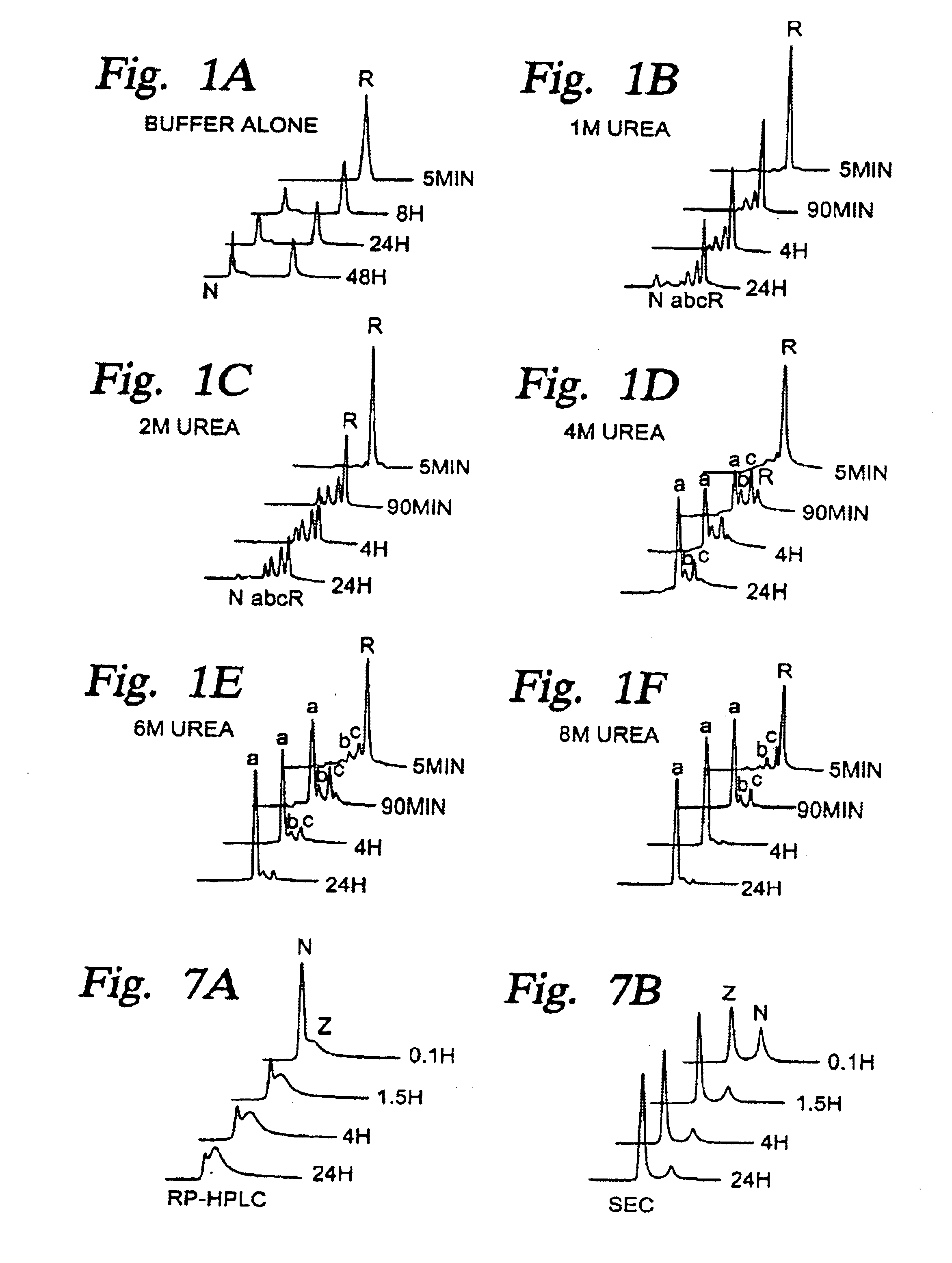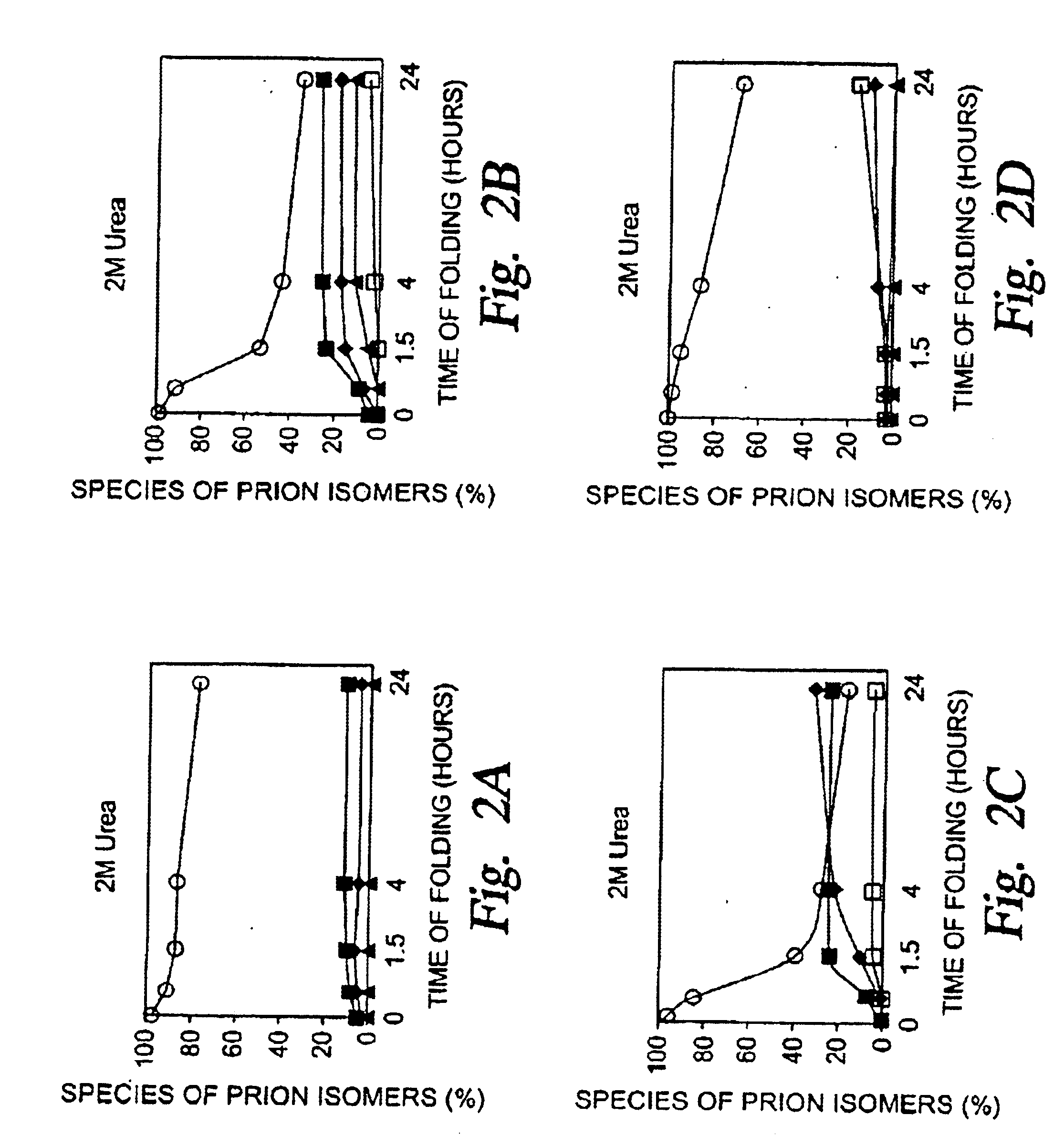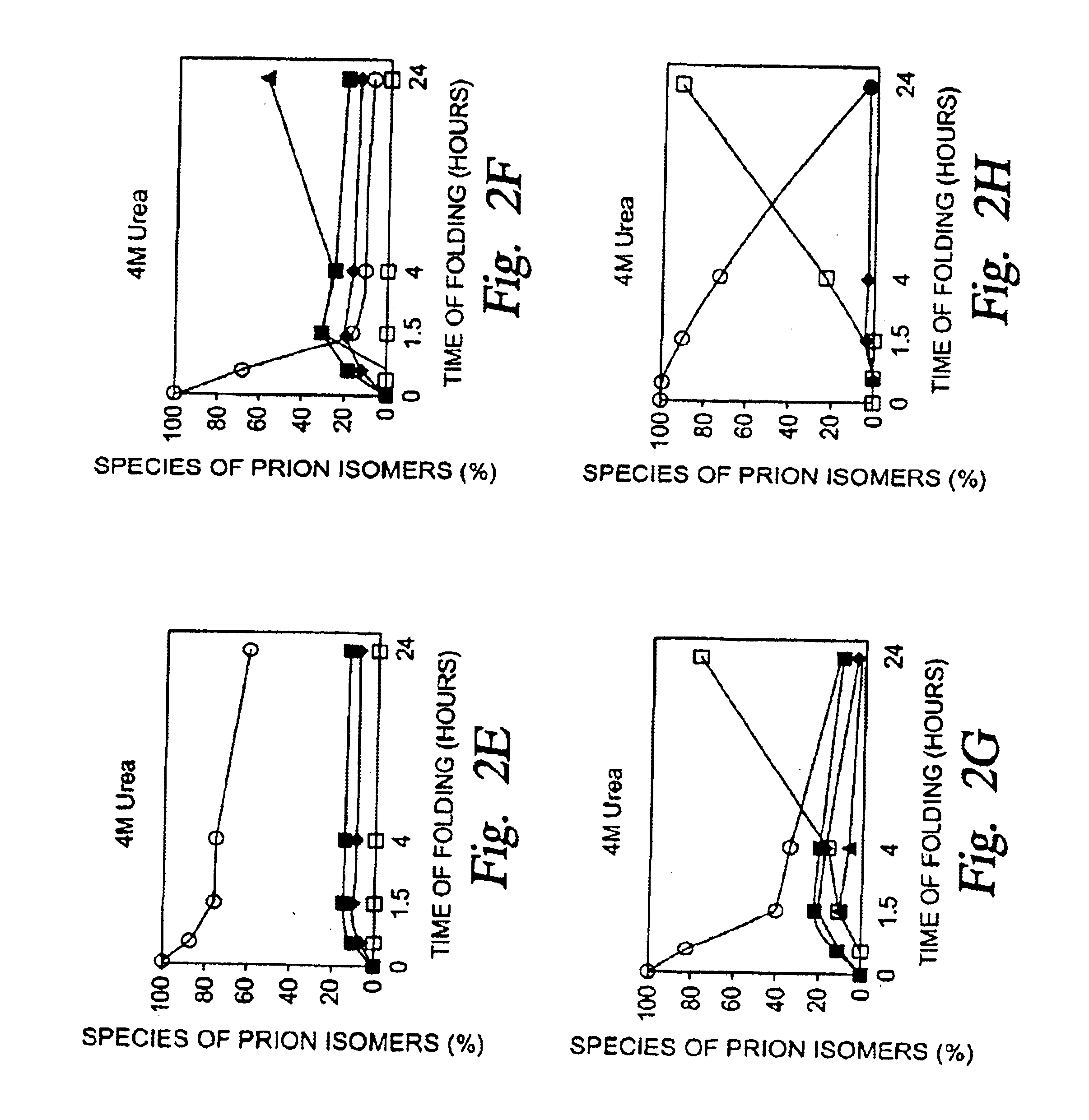Prion isomers, methods of making, methods of using, and compositions and products comprising prion isomers
a technology of prion isomers and isomers, which is applied in the field of prion isomers, can solve the problems of inability to demonstrate the conditions that permit fractionation and isolation of stable prion isomers, hampered the efforts to investigate the structure of prpsc, and inability to bind to prion isomers
- Summary
- Abstract
- Description
- Claims
- Application Information
AI Technical Summary
Problems solved by technology
Method used
Image
Examples
example 1
Expression and Purification of Recombinant Mouse PrP(23-231)
[0085]Expression and purification of recombinant mPrp(23-231) was achieved using the method developed by Hornemann et al. (S. Hornemann et al., (1997) FEBS Lett. 413, 277-281.). Protein concentrations were measured by the Bradford method (purchased from Bio-Rad). The resulting purified proteins were verified by Edman Sequencing, matrix-assisted laser-desorption / ionization mass spectrometry with a time of flight detector (MALDI-TOF MS), SDS-PAGE and circular dichroism (CD).
example 2
Oxidative Folding of mPrP(23-231)
[0086]The native mPrP(23-231) protein was first reduced and denatured by incubation in Tris-HCl buffer (0.1 M, pH 8.0) containing 100 mM of dithiothreitol and GdmCl (6M) at 23° C. for 90 minutes. The reducing reagent and denaturant were removed by passing the solution through a NAP-5 column (Pharmacia, G-25) equilibrated in 20 mM sodium acetate buffer (pH 5.0). Samples were then made ready for folding experiments by concentrating the protein to 2 mg / ml using Ultrafree centrifugal filters (Millipore, Biomax, 5K). In order to initiate protein folding, freshly prepared reduced / denatured protein was diluted to 0.2 mg / ml in buffers comprising a selected pH and concentration of urea.
[0087]Folding reactions were carried out at 23° C. in sodium acetate buffer (20 mM). The pH of the folding reaction was pH 4.0, as shown in FIG. 1, or was in the range of 2-9, as shown in FIG. 2. Folding intermediates were trapped in a time course manner by mixing aliquots of t...
example 3
Identification of Conformational Isomers of mPrP(23-231)
[0089]Prion isomers purified by HPLC were freeze-dried and modified with 4-vinylpyridine in a Tris-HCl buffer (pH 8.0) for 30 minutes at 23° C. Modified samples were desalted by a NAP-5 column using 0.5% TFA or by HPLC using the same conditions as stated above. All of the samples were analyzed by MALDI-TOF (matrix-assisted laser-desorption / ionization mass spectrometry with a time of flight detector) mass spectrometry.
Identification and Isolation of mPrP-a, mPrP-b and mPrP-c, Novel Species of Mouse Prion Protein.
[0090]These studies were conducted by examining the cumulative effects of six different pHs (3.0, 4.0, 5.0, 6.0, 7.0 and 8.0) and six different concentrations of urea (0M, 1M, 2M, 4M, 6M and 8M). The optimal pH for the preparation of the mPrP-a, mPrP-b and mPrP-c isomers was found to be 4.0 and the result is illustrated in FIG. 1. In buffer alone, reduced mPrP(23-231) (mPrP-R) folds directly to form native (oxidized) spe...
PUM
| Property | Measurement | Unit |
|---|---|---|
| molecular weight | aaaaa | aaaaa |
| pH | aaaaa | aaaaa |
| pH | aaaaa | aaaaa |
Abstract
Description
Claims
Application Information
 Login to View More
Login to View More - R&D
- Intellectual Property
- Life Sciences
- Materials
- Tech Scout
- Unparalleled Data Quality
- Higher Quality Content
- 60% Fewer Hallucinations
Browse by: Latest US Patents, China's latest patents, Technical Efficacy Thesaurus, Application Domain, Technology Topic, Popular Technical Reports.
© 2025 PatSnap. All rights reserved.Legal|Privacy policy|Modern Slavery Act Transparency Statement|Sitemap|About US| Contact US: help@patsnap.com



